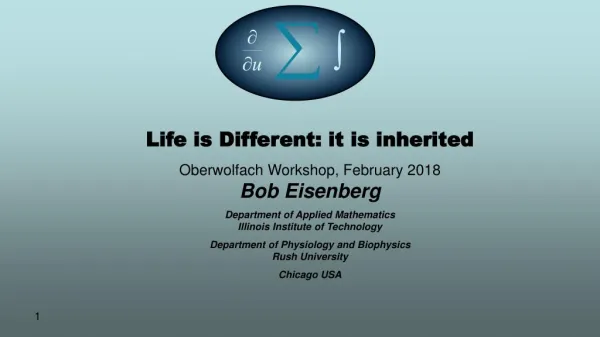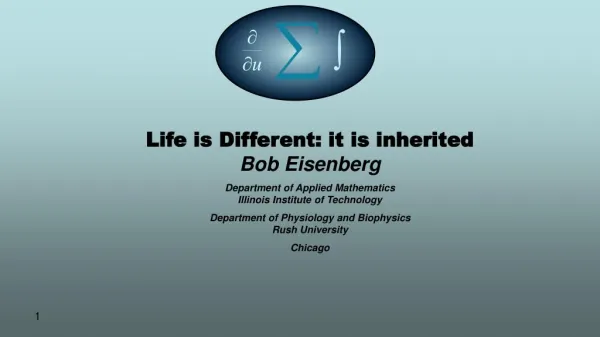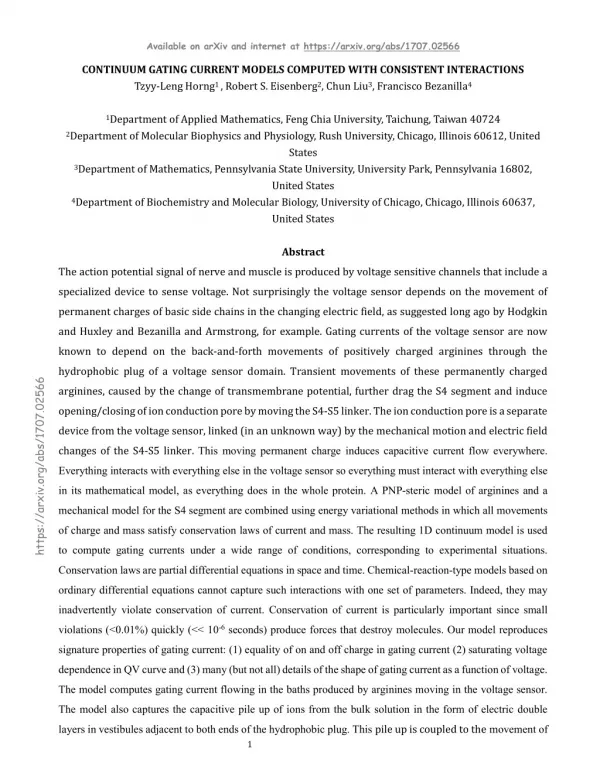Life is Different: it is inherited
Biology is inherited. Information is passed by handfuls of atoms in the genetic code. A few atoms in the proteins built from the code change macroscopic function. Indeed, a few atoms often control biological function in the same sense that a gas pedal controls the speed of a car. Biological questions then are most productive when they are asked in the context of evolution. What function does a system perform? How is the system built to perform that function? What forces are used to perform that function? How are the modules that perform functions connected to make the machinery of life. Physiologists have shown that much of life is a nested hierarchy of devices, one on top of another, linking atomic ions in concentrated solutions to current flow through proteins, current flow to voltage signals, voltage signals to changes in current flow, all connected to make a regenerative system that allows electrical action potentials to move meters, under the control of a few atoms. The hierarchy of devices allows macroscopic properties to emerge from atomic scale interactions. The structures of biology create these devices. The concentration and electrical fields of biology power these devices, more than anything else. The resulting organisms reproduce. Evolution selects the organisms that reproduce more and thereby selects the devices that allow macroscopic control to emerge from the atomic structures of genes and proteins and their motions.
★
★
★
★
★
697 views • 69 slides









